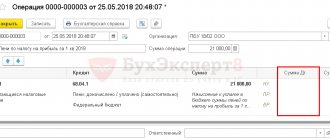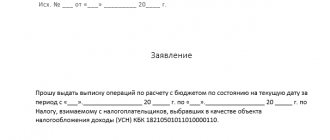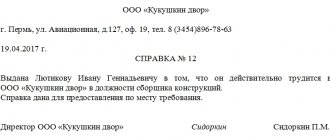KND 1120101: what kind of certificate
In order to confirm the absence or presence of debt to the budget or to verify balances, there are several documents (Article 32 of the Tax Code of the Russian Federation):
- information on the status of settlements (KND 116080 and 116081);
- information on the fulfillment of the taxpayer’s obligation (form KND 1120101);
- reconciliation report on taxes and fees (KND 116070).
All these documents can currently be obtained in both paper and electronic forms.
Today we will dwell in more detail on what constitutes a certificate of tax arrears in the KND form 1120101. The document form was approved by Order of the Federal Tax Service dated January 20, 2017 No. ММВ-7-8/ [email protected]
KND 1120101 (form)
Why do you need a certificate of accounts receivable?
A certificate of receivables is legitimately understood as:
1. A document generated by an economic entity, which is an authorized party under a certain civil law agreement, for presentation to the court.
The corresponding certificate is drawn up to substantiate the specific scope of the plaintiff’s claims against the defendant. Moreover, during the trial, the defendant can substantively formulate objections regarding certain positions reflected in the certificate from the authorized party.
ConsultantPlus experts explained in detail how receivables are collected within the framework of enforcement proceedings:
Study the material by getting trial access to the K+ system for free.
2. A document generated by an economic entity reporting to some other entity (for example, along a departmental chain of command).
It can be compiled by a business entity on a periodic basis as reporting documentation (for example, based on the results of an inventory of liabilities). In this case, the certificate may reflect not only receivables, but also accounts payable (since a higher authority may be no less interested in being aware of it than in obtaining information about the receivables of the reporting organization).
The first type of certificate of receivables, as a rule, is drawn up in free form. The second is often based on standardized forms. Let's consider their specifics.
Certificate of presence (absence) of tax debt: where and how to get it
To obtain information about the fulfillment of taxpayer obligations, you must contact the Federal Tax Service. The document can be obtained from the tax office:
- in paper form with the seal and signature of the head of the Federal Tax Service;
- in electronic form with the digital signature of the head of the Federal Tax Service.
The form does not contain specific debt figures. If there is no debt, then a certificate of no debt will be received from the Federal Tax Service. If there is a debt, then a corresponding entry will be made in the form, and the Appendix will indicate the codes of the inspections with which the taxpayer has a debt.
If you receive information about the existence of a debt to the budget, you do not agree with this, you should check with the Federal Tax Service to detect and correct the error.
Sample certificate of absence of debt on utility bills
The certificate does not have a unified form and it looks different for each organization:
- sample certificate of payment for heating and hot water supply:
- sample certificate of payment for major repairs;
- sample certificate from the information settlement center in Moscow:
Features of receiving in paper form
A certificate of taxes and fees on paper is issued upon written request. It is better to fill it out using the form recommended by the Federal Tax Service (you can download the application form at the end of the article).
The request can be submitted by visiting the inspection in person, or it can be sent by mail in a valuable letter with a list of the contents. If the company is registered in the taxpayer’s personal account, then the request can be sent through it. During a personal visit, the request must be submitted by the head of the company or an authorized person.
The form must indicate:
- name, TIN, address of the taxpayer;
- details of the inspection to which the request is submitted;
- the date for which the information needs to be generated;
- method of receiving the document (in person or by post);
- signature and full name manager or authorized person.
The document must be generated by the inspectorate and transferred to the taxpayer within 10 working days from the date of filing the application. If the application indicated that the certificate will be collected by the head or representative of the company, then after this period you must contact the operating room of the Federal Tax Service. The document will be issued against signature, and the fact of issue will be recorded in the appropriate log book.
Delivery deadlines
The Tax Code clearly regulated the deadlines for issuing a certificate. In accordance with paragraphs. 10 p. 1 art. 32 of the Tax Code of the Russian Federation, the document is issued after 10 working days from the date of registration of the request. Moreover, it does not matter how exactly the taxpayer submitted the request - in person at the branch or online. In any case, the starting date is the day when the request was recorded in a special tax register.
Attention: the law says that the document is issued within 10 days. However, in practice, the Federal Tax Service almost always produces paper by the very end of the due date.
Remember also that the deadline for providing a certificate does not apply to ambiguous situations. So, for example, if, when checking a debt, it turns out that the taxpayer has unpaid fees, fines or penalties, the countdown from the date of the request is canceled. Until additional documents are provided or debts are paid, it is pointless to demand a certificate.
Only after the conflict situation has been resolved can you receive the paper, but to do this you will have to submit the request again and wait ten working days.
Validity period of the certificate
Strictly speaking, the expiration date of a document is simply impossible to determine, since every month people receive income, take on debts, spend money, etc. Therefore, tax debt can appear very quickly.
In this regard, the validity period of the certificate does not exceed 10 days from the date of its issuance by the Federal Tax Service . So, if a document is needed to conclude a deal, participate in a government tender, etc. — you should order paper at the very last moment, when the rest of the package of documents is already ready.
Features of receiving in electronic form
Increasingly, electronic document management is being used in practice and electronic forms of documents are being used. A certificate of tax arrears was no exception. Inspections are very actively introducing electronic document management via telecommunication channels through authorized operators.
To receive a document in electronic form, you must also send a request in electronic form via TKS. The Federal Tax Service has developed an appropriate form for this purpose. It was approved by Order of the Ministry of Finance dated July 2, 2012 No. 99n (see form at the end of the article).
In the application we fill in the following details:
- name, TIN, address of the taxpayer;
- details of the inspection to which the request is submitted;
- request code (in our case it is 2);
- the date for which the information needs to be generated.
In response, the Federal Tax Service will issue a form similar to a paper one, signed with an electronic digital signature.
The response time for TKS is also 10 days. But, as a rule, tax inspectorates generate a response much faster, and a response can be received within 2-3 days.
Why do you need a certificate of no rent arrears?
The certificate may be required to be attached to the package of documents in the following cases:
- When carrying out real estate transactions, to ensure that there is no debt that, after the transfer of ownership, may end up with the new owner.
- In preparation for the privatization of living space (if a debt is discovered for the residents, they will be denied this procedure until it is fully repaid).
- When applying for a housing subsidy to pay utility bills.
- For presentation to the bank when a loan is taken out against housing. Credit organizations may ask you to attach a certificate to the package of documents for applying for a large loan, as a guarantor of the client’s solvency.
- The guardianship and trusteeship authorities may request a certificate stating that potential guardians do not have debts for a communal apartment.
- For judicial authorities, this document will become additional for conducting some cases on controversial real estate situations.
Is the received certificate filled out correctly?
Let's look at an example of what a completed certificate KND 1120101 should look like: a sample is presented below.
1. A serial number must be assigned.
2. The name, INN and KPP, and address of the taxpayer are indicated. When generating information for a company that has separate divisions, the checkpoint may not be specified.
3. The date must correspond to the date specified in the request
4. The most important record is the record of the presence or absence of debt
5. The name of the inspection that issued the form must be given
6. At the bottom of the paper document there must be the signature and seal of the head of the Federal Tax Service, and on the electronic document - the digital signature details.
Below is a completed document, which is assigned a code according to KND 1120101: certificate (sample).
KND 1120101 (form)
Application (request form)
Nuances and possible problems
Most often, a certificate is needed when making a housing transaction. The law does not establish the transfer of debt from the previous owner to the new one, but management companies usually practice this method. To collect the amount of debt will require a long time and litigation, which they are not always ready for.
Therefore, it is in the buyer’s interests to ask the seller in advance for a certificate of arrears on utility bills to be sure that there are no debts. If they have been accumulated, then there is an opportunity to be prepared for this and agree on methods of repayment, indicating the corresponding clause in the transaction agreement. This must be documented in writing so that it is possible to recover funds from the former owner to pay off the debt in court.
Finding the former owner and collecting debt from him is the job of the management company, which, not wanting to do this, shifts the problems to the new owner of the apartment. This forces him, in the presence of a significant debt, to enter into legal proceedings.
If citizens living in residential premises refuse to pay utility bills, the following measures may be applied to them:
- Eviction. If the housing is rented, then six months are given to repay the debt. The tenants are then evicted and given replacement premises. If this housing is the only one where the debtor-owners live, it is impossible to evict them;
- When preparing privatization documents, applicants with debt will be refused;
- The supply of utility resources may be limited: electricity, gas, with prior notice;
- Judicial debt collection, where the initiator is the management company. According to the writ of execution, half of it will be forcibly collected from the person receiving any official income to pay off the debt.










